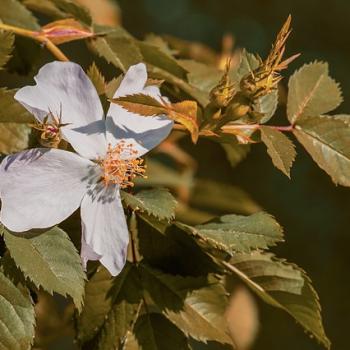
My childhood memories of the mosque hardly evoke the idea of sacred space. I recall damp basements with mouldy walls (and the occasional mushroom growth), stifling in summer and so cold in winter we could see our breath when we recited the Quran, rocking back and forth vigorously to warm ourselves. At home, the only sacred aspect was the prayer mat, which would be brought out and placed wherever there was space for the quick ritual prayer. As a teenager I stopped attending mosque and as a young woman my prayers were usually uttered in bed, when I couldn’t sleep. The concept of sacred space didn’t enter my consciousness until much later in my life when I started attending a Sufi circle.
Here I learned that being part of a spiritual community affects every part of your life. It’s not just about sitting together, praying together and sharing together, but also the detail around you that goes into creating a conducive atmosphere for spiritual reflection, whether at home or in public shared spaces.
Being slightly OCD, I find the concept of sacred space in our tradition very comforting. Through the practices that our teachers have shared, I have come to realise and appreciate the subtle and extremely powerful effect of attention to space. In our gatherings we spend considerable time before we congregate to cleanse and prepare the space before we begin. Having spent some years in spaces like this, I now find that I am very conscious of these things when in other spaces.
I recently found myself back in my hometown mosque due to family bereavements. Some things had changed: while the ladies section was unfortunately still in the basement at least it had disabled access, there was no dampness or mushrooms that I could see, and the thick carpet was easy on the knees. However, my attention during prayer was distracted by the fact that I was facing a vacuum cleaner. While my inner-OCD-self was happy to see evidence of cleanliness, I was less inspired by the fact that the vacuum seemed to live next to the mihrab.
Shortly thereafter I attended a series of Islamic conferences held by different organisations. I was pleased to find a wide spectrum of people present, no segregation, and a pray-when-you-want schedule. The ease and flexibility of the space was encouraging, as my previous experience of Muslim conferences was not positive. But I was struck by the lack of attention to the prayer space within the venues. It made me reflect that while we were gathered to speak about Islam, and how to work together to better things in our society, a fundamental aspect of our faith was being neglected. Was it because we had become so used to finding convenient (or not-so-convenient) corners of our work-places to hastily say our daily prayers that when we have our own venue we fall back into that mode of thinking – that a corner of an office room, with chairs haphazardly moved aside, a few sheets placed down, and no allocated space for (smelly) shoes, becomes good enough to quickly say our fard prayers before we come out and continue talking about the important issues of our religion?
Have we become so busy trying to save Islam that we are overlooking the simple beauty of what is at the heart of it? Muhammad, peace be upon him, is reported to have said ‘God is beautiful and loves beauty.’
A friend on the path shares the following reflection on his blog, Abdur Rahman’s Corner:
God’s beauty also requires a response on our part. As God is beautiful, so we too must actualise beauty in our own lives. As God loves beauty, so we too must find, appreciate and love the beauty of creation. Indeed, we must bring beauty into being ourselves…
It may seem odd to think that a prayer space at a conference should trigger such reflections for me, but I do believe that a lack of attention to the beauty in detail contributes to the negativity in our world today. We carry out ablution before we meet God in prayer, but what about the space we sit in, the space we greet our beautiful Sustainer? I recall many years ago, a friend told me about her prayer preparation – perfuming herself, placing flowers, and lighting candles in her prayer niche (a dedicated space in a corner of her bedroom), before doing salah. It made a lasting impression on me at a time when I was rushing my prayers in order to get back to, dare-I-say, more important things.
I have learned that little things bring beauty and harmony into a space including but not limited to the following:
Cleansing – incense has been used for centuries in all spiritual traditions as a means to cleanse spaces of musty odours and toxic energy; wiping surfaces with rose water gently infuses the air and uplifts. Entering such a space immediately calms the mind and helps focus our attention on our inner sacred connection. I’ve had the opportunity to experiment with different types of natural incense and candles, occasionally over-doing the frankincense which has led to some interesting meditations.
De-cluttering – we have copious amounts of self-help gurus teaching us how to de-clutter our minds and our home, but conscious space is part of our spiritual heritage, something we have forgotten especially when it comes to placement of shoes! In a Sufi lodge, there is someone responsible for consciously keeping the shoe area tidy – an education all Muslims need these days.
Conscious ablution – along with messy shoes, this is my other main bugbear. Why are Muslims unable to leave a bathroom without it looking like a tsunami hit? Apart from environmental awareness, there is the lack of basic adab of ‘leave it how you found it – or better’. Gratitude for clean water, being aware of the purpose of ablution, and respect for the space and others who use it are other areas where we need to be more present and mindful.
Sound – noise pollution is another aspect of spiritual work that is often overlooked and under-appreciated. I have seen that it really is possible to be in a group of up to 100 people without being noisy. Again, conscious awareness is key, maintaining one conversation in a group where possible, avoiding talking over someone else, and really listening to hear rather than waiting to reply.
Creating a beautiful space means that we take time and pay attention to where we are and who we are doing this for – ourselves, our community, and God. Mindful awareness makes us more present, gentle and compassionate. Are not these the very qualities that our fractured world needs the most right now? We can talk endlessly about the issues we face in the wider world, but action – and the details of how to consciously embody and express the divine compassion and beauty – are what might really lead us to positive change.
















